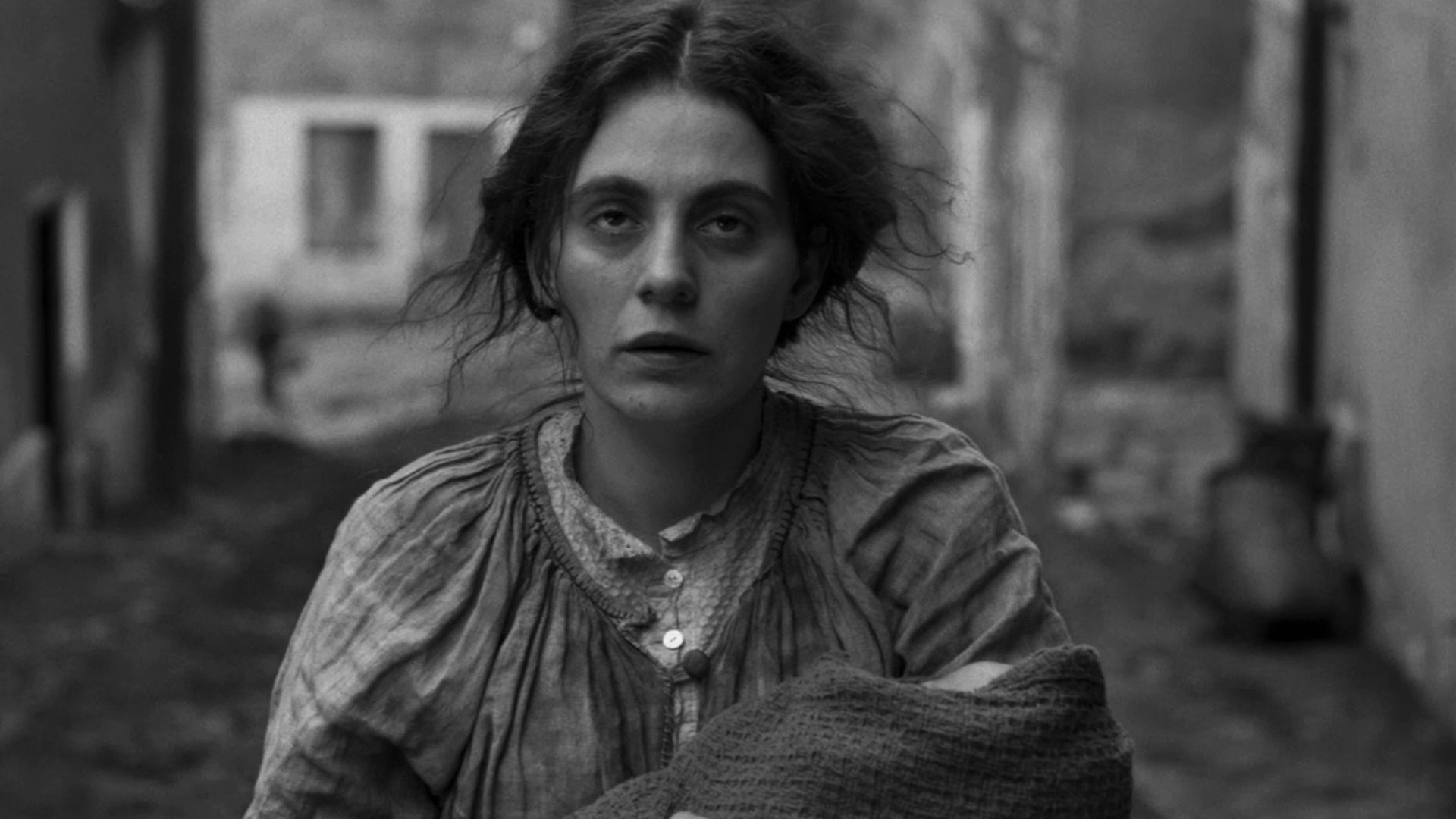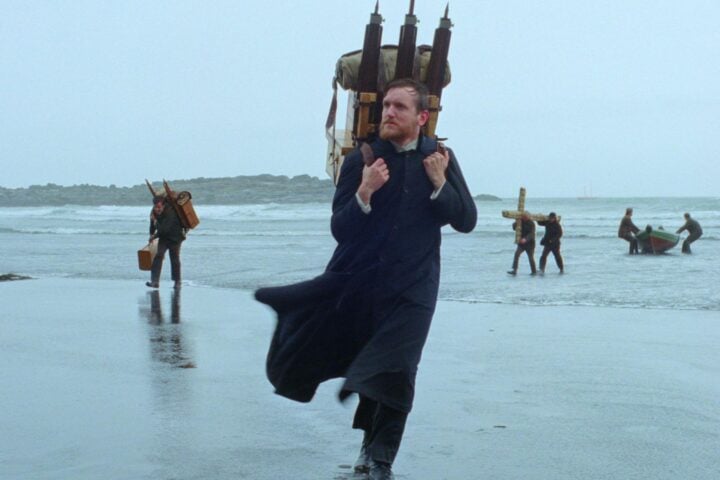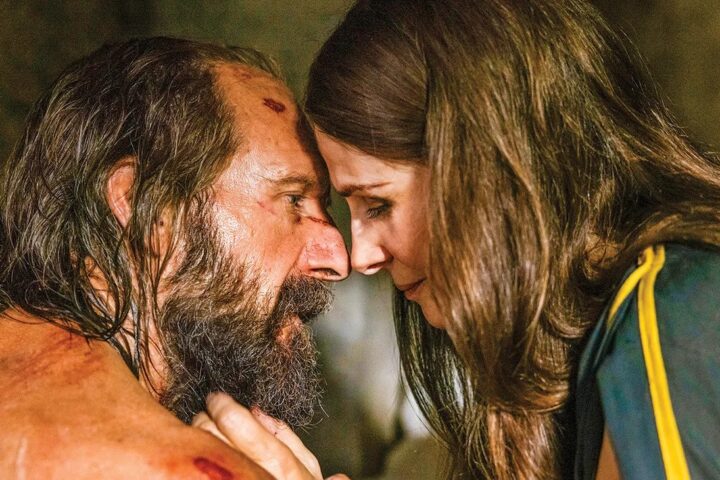In ways both literal and figurative, the face plays a central role in The Girl with the Needle, Magnus von Horn’s unsparing black-and-white drama about a woman whose life spirals from bad to worse after an unexpected pregnancy. What does a face show and hide? Is there even such a thing as a trustworthy face? The film opens with a tone-setting montage of disfigured faces that portends the societal decay of post-World War I Copenhagen—a rot that becomes apparent in the story as it increasingly infects a young woman facing motherhood.
The film proper begins on Karoline (Vic Carmen Sonne), who believes that her husband died in the war, being evicted from her flat by her landlord (Per Thiim Thim) because of overdue rent. Things would seem to take a turn for the better for the woman when she becomes pregnant by Jrgen (Joachim Fjelstrup), the well-to-do owner of the factory where she works. But after Jrgen’s mother (Benedikte Hansen) threatens to cut off her son from his fortune if he entertains marriage to Karoline, our heroine is seemingly damned to a life of misery.
In one of The Girl with the Needle’s most wrenching scenes, Karoline attempts to give herself an abortion with a knitting needle while at a public bath. It’s there that she’s saved from almost certain death by Dagmar (Trine Dyrholm), who runs an adoption agency under the fake storefront of a candy shop. Karoline and Dagmar’s kinship is based on the shared knowledge of what it means to live as a woman of a certain class, and the film is as fascinating for how it traces the ever-mutating relationship between the two characters as it is for its shifts in genre.
As Karoline, Sonne is endlessly expressive, her character’s exasperation giving in to guilt as she learns more about Dagmar’s adoption agency. Dyrholm portrays Dagmar with a stony, motherly authority that masks vulnerability but also something more sinister. As Karoline comes to increasingly spend more time with Dagmar, she would appear to be immobilized by Stockholm syndrome, only for the women to become equally codependent on the other.

From the eerie shots that capture the verticality of Copenhagen to the blurring of background elements, The Girl with the Needle consistently conjures a disorienting and claustrophobic effect. In unison with the brilliantly alien and anxiety-inducing sound design by Oskar Skriver, this strikingly expressionist vision resides uncomfortably in a realm of psychological horror.
Perhaps inevitably, von Horn’s film invites comparison to other recent horror films that grapple with the angst of womanhood. But whereas, say, Michael Mohan’s Immaculate homes in on some form of rejection, to motherhood or societal pressures, The Girl with the Needle is a more ambiguous study of guilt. There’s no specific moment in the story where the viewer comes to a decisive understanding of what Karoline feels about motherhood because the film shows that she’s simply trying to survive the tatters of her own damaged life.
For Karoline and the other women who walk through the door of Dagmar’s candy shop, it all comes down to whether or not it’s feasible, let alone right, to bring a child into the world—and the guilt that surrounds such decisions forms the emotional pillar of the story. But von Horn’s screenplay condemns a broader societal rot that’s not only harsh and apathetic toward women, but also toward others, such as war veterans, as the source of all this suffering.
Indeed, there are moments here that seem more interested in exploring the delirium and nihilism that WWI has caused in people. Consistently brimming with tension, the film gets more horrifying when you consider the motives, or lack thereof, of the characters, and like any good psychological horror worth its salt, the implications creep up on you. Despite being set a hundred years ago, The Girl with the Needle is a topical film that becomes all the more chilling when you realize, unsurprisingly, that it’s inspired by true events.
Since 2001, we've brought you uncompromising, candid takes on the world of film, music, television, video games, theater, and more. Independently owned and operated publications like Slant have been hit hard in recent years, but we’re committed to keeping our content free and accessible—meaning no paywalls or fees.
If you like what we do, please consider subscribing to our Patreon or making a donation.





